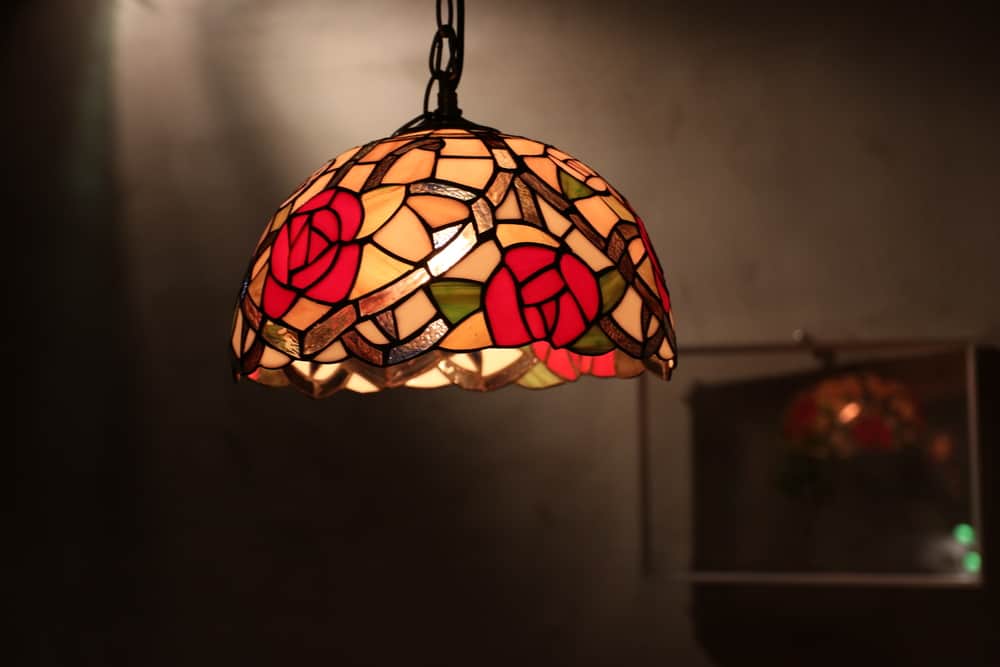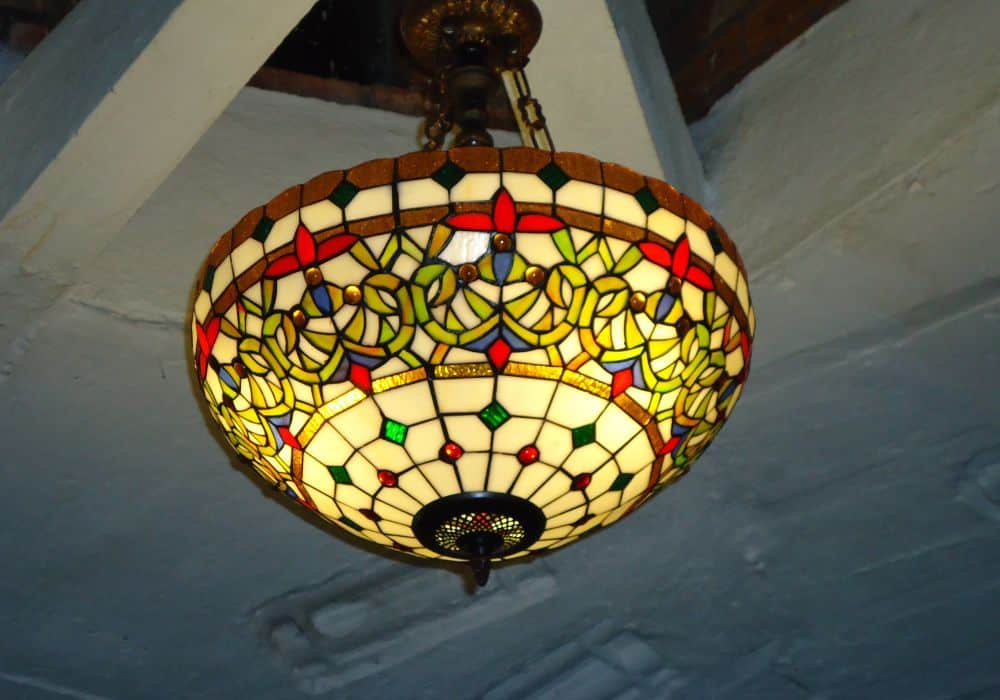Do you have an antique glass lamp shade that you believe is valuable? Lamp shades are a component of interior decoration that many people seem to miss or tend to forget. A beautiful pagoda shade’s slope, the intensity of a large piece, or the speckled shades coming from a vintage Tiffany lamp could add drama, classiness, and enthusiasm to almost any space. Part of the appeal of owning old household lighting such as antique glass lamp shades is that they can add a historic feel, more than any other collector’s item. If you’re a fan of the soft glistens of the Victorian era, you need to look at the glass lamp shade to see which ones would match your dining room or office.
According to Antiquelampsupply, old lamps aren’t difficult to find today, thanks to the increased curiosity for antique shops, auctions, estate sales, and flea markets. You can buy a variety of lamps, but how do you know if your lamp is a waste or treasure? This article reveals some of the important signs to search for when checking antique glass lamp shades, as well as some of the most notable antique glass lamp shades manufacturers.
Table of Contents
Types of antique glass lamp shades
Because of their colorful designs, glass lamp shades were among the most notable objects in the house by the 1880s. They were a staple of the adequate Victorian home, and the glass shades came in a variety of shapes. In conformance with Paxtonhardware, the ‘ball’ style, which featured a painted glass globe shade, was one of the most popular types of shades, but the options were truly limitless.
Based on the shape and diameter, the lamps could be:
-flowers
-shells
-fabric poufs
-balls
-cylinders
-torchiere
-student
-reflector shades
Notable antique glass lamp shades manufacturers
Lamp-shade design appeared in the 1800s, but it was at the end of the century that it was promoted to more than functionality. As electricity became more popular, lamp manufacturers attach importance to the art of illumination. The following are some of the most well-known manufacturers whose glass shades dominated the field.
Tiffany Studios
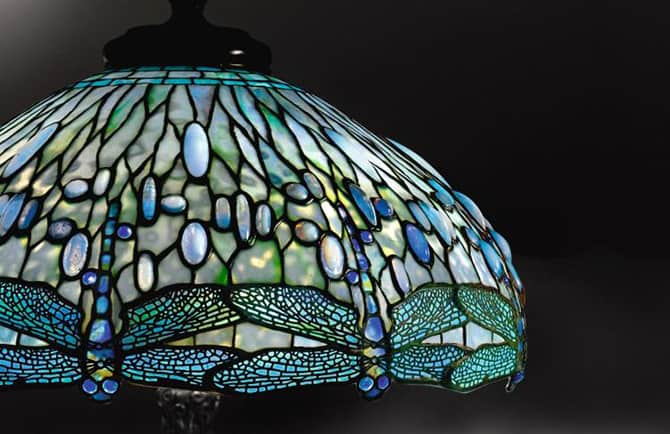
Tiffany Studios produced many iconic leaded glass lamps. They were first presented in the early 20th century and have maintained a strong universal reach since then. Louis Comfort Tiffany is the company’s founder. For nearly 40 years, his factory in New York produced glass shades and other decorative objects. Tiffany recruited the best craftsmen to bring his vision to life. Each small section of glass was specially picked by the people in the cutting departments, making lampshade fabrication a tedious task. The most expensive Tiffany lamp ever sold was for $2.8 million at a Christie’s auction in 1997. The simpler Tiffany glass shades are roughly $5,000.
Bigelow Kennard & Co.
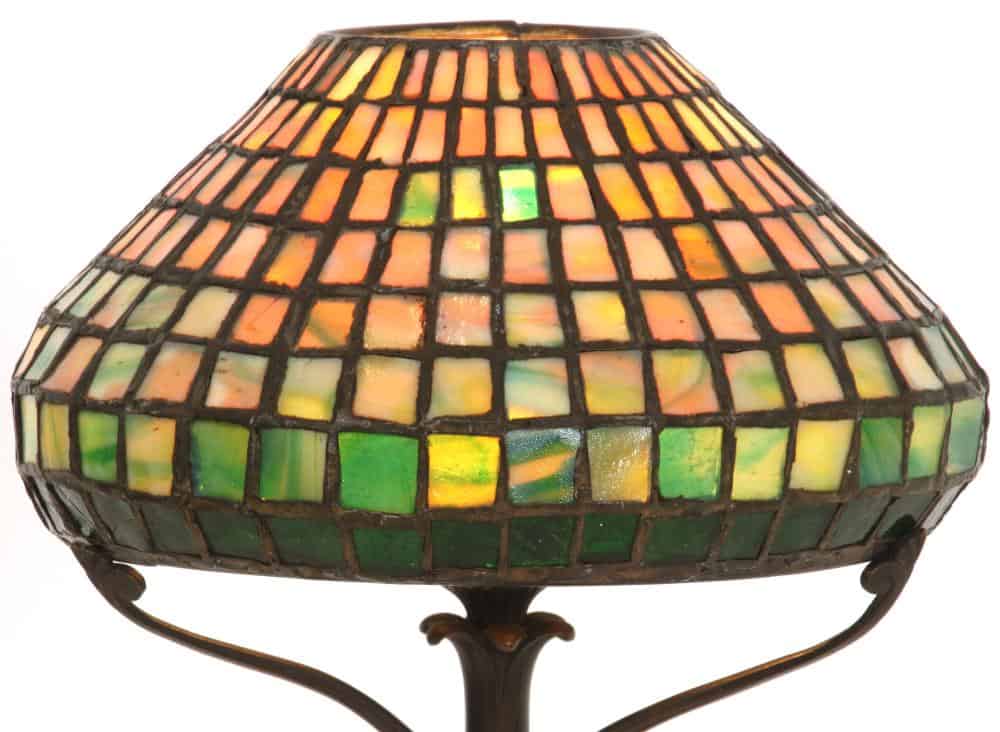
Bigelow Kennard & Co. of Boston was a prominent seller in the 19th and early 20th centuries. They made high-quality glass, silver, and clocks. John Bigelow founded the firm, which was followed by his brothers, Alanson and Abraham Bigelow. Martin Parry Kennard joined in 1845, prompting the name to be altered to Bigelow Bros. & Kennard. Bigelow, Kennard & Co. was the firm’s name after 1863. The shop closed in 1971.
Corporation Pairpoint
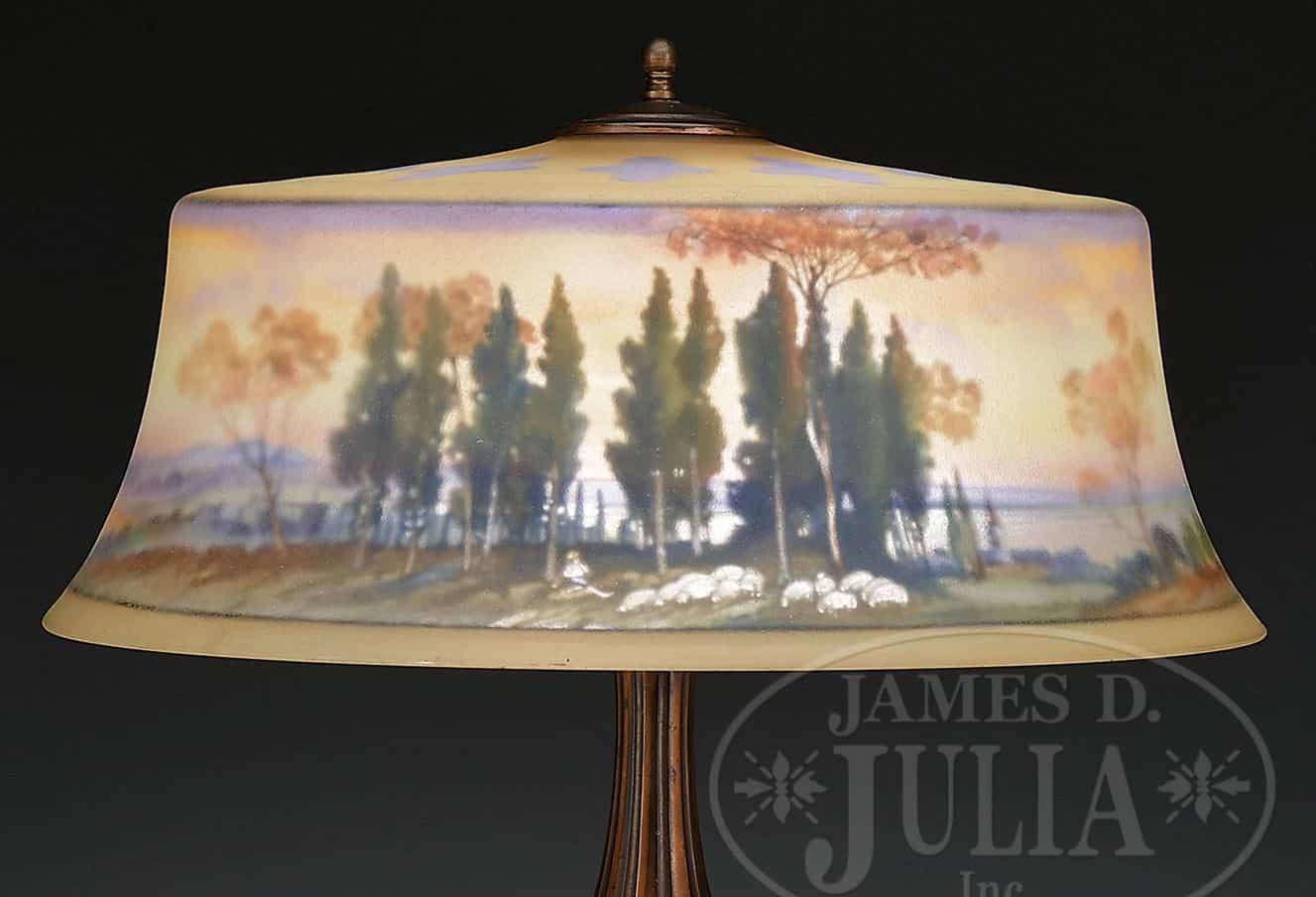
Pairpoint Glass Company is a Massachusetts-based American glass manufacturer. It is the oldest glass company still active in the United States. Between 1895 and 1930, the company was best known for its blown glass shades. They came in three varieties: blown-out reversed painted shades, ribbed reverse painted scenic shades, and landscape shades. Collectors today seek out puffy style blown glass lamps with roses, mums, and other flowers. These lamps have attracted the attention of collectors who spend exorbitant prices for a Pairpoint original.
Kimberly and Duffner
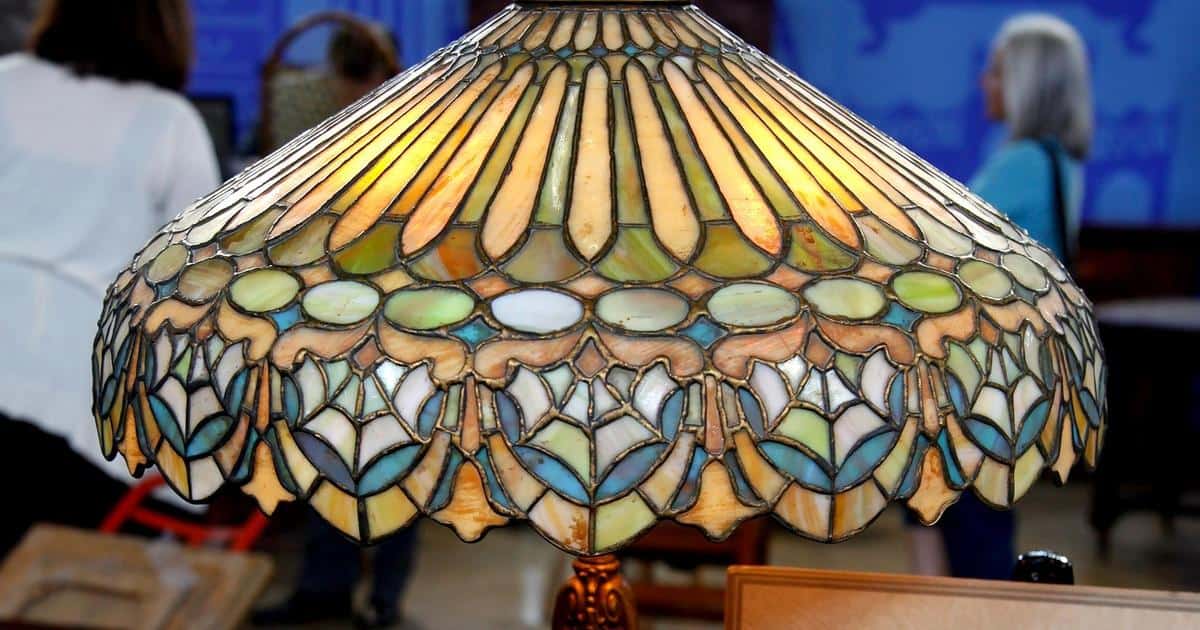
Duffner & Kimberly was a New York City firm that manufactured leaded glass and lamps around the same period as Tiffany Studios. The Duffner & Kimberly Company was founded in December 1905, and its first lamps were introduced in 1906. They had abstract and floral styles, and the colors had lots of red and gold. Duffner and Kimberly concentrated solely on producing extremely high-end art glass shades. Duffner and Kimberly lamps are in high demand. A good state Duffner and Kimberly lamp with no missing glass can be worth up to thousands of dollars.
The Handel Company
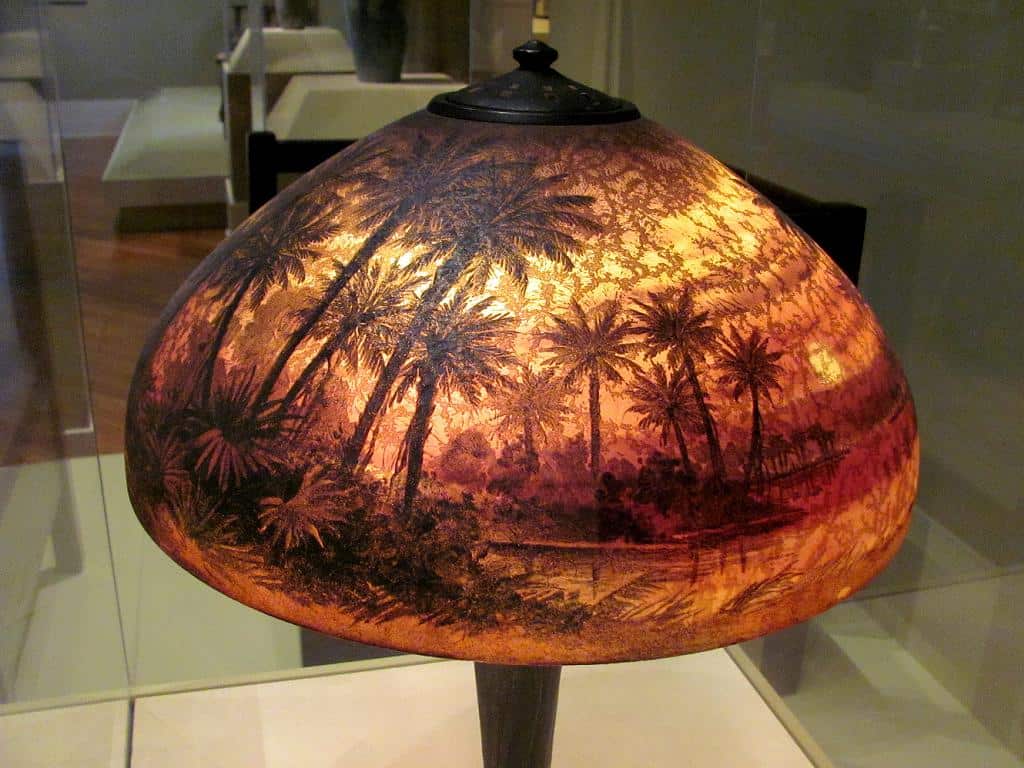
The Handel Company, founded in 1903, produced a wide range of glass and ceramic wares. Unlike other companies of that time, The Handel Company did not produce its own glass lampshades. They obtained glass from third-party suppliers. The Handel Company, best known for their painted floral and scenery lampshades, also made leaded glass mosaic lampshades and colored glass lampshades.
How do I know if my antique lamp is valuable?
An antique, as defined by the industry, is a collectible object that is at least 100 years old. Do you believe you have an antique lamp, but you are unsure about it? The age of an antique lamp distinguishes it from a modern lamp. Look for a label indicating the manufacturer on the body of your lamp. Antique lamps designed by prestigious companies will have their brand’s logo somewhere on them. If it is missing, you can look for other symbols. A lamp’s design, style, and finish materials can also reveal if it is actually antique. A glass shade, especially one in excellent condition, is typically a fantastic indicator of old, expensive shades. The majority of antique lamps can be found on specialized websites, and most of them have standardized designs, styles, and patterns.
In Dr. Lori’s Youtube video, you can see the process of appraising and valuing antique glass lamps, as well as different information about specific functionalities, styles, and designs.
What to look for when buying an antique glass lamp shade?
If you just decided you want to try your luck and go out thrifting for an antique glass treasure, you first need to do some research. Besides looking for the label of a famous company, which is a clear sign of a nice find, you must search for other distinctions.
Here are some tips on what you should know when searching for the most valuable antique glass lamp shades, according to Antiquelampsupply:
- You need to analyze the situation of your lamp shade to see if it has any damage or if it can be repaired. Damages can diminish the price of a lamp, but they do not always lower the value of a rare item.
- If your lamp is electric, plug it in to see if it lights up. Unplug the lamp and look for signs of equipment maintenance and contemporary upgrades, such as glued-up fissures and paint touch-ups.
- Lamps are more precious when they are in their original state with most or all of the original pieces. Scratch the underside of the lamp shade lightly to verify the material it is produced of. If the glass shade’s texture feels oily or fragile, it may be an old or genuine shade for the lamp.
- Consider the color of the glass. Examine the colors of the glass; are they delicate, saturated, bright, or soft? The colors should be similar in style and strength. If the shade has a “Crayola crayon” glance, with excessively vibrant or conflicting color combinations, it could be of a recent shade or have some replaced glass panels.
If you’re still unsure, seek the advice of a reputable dealer, appraiser, or auction house. They will be familiar with these glass lamp shades and their characteristics, and will gladly assist you in identifying a lamp you own or want to buy.
If you need more visual help, Crazy Lamp Lady will give you even more information in this video, to help you determine by yourself if your antique lamps could have resale value.
Conclusion
In the 20th century, a wide range of glass lamps was produced in America to meet increasing demands for stylish lighting models. While Tiffany Studios established the industry benchmark for vintage lighting, other companies also produced great designs. Glass shades came in a variety of shapes, sizes, and colors, the most notable being the colorful ball, but each piece is unique. These glass shades are now considered antiques and besides their ethereal beauty, have a great monetary value.
If you want to get into the world of antique glass shades, the most important step is to research them. This will teach you everything you need to know to find the best treasures in thrift shops.
There is a whole world of glass shades out there waiting to be found and paired with the perfect lamp, so go get them!
